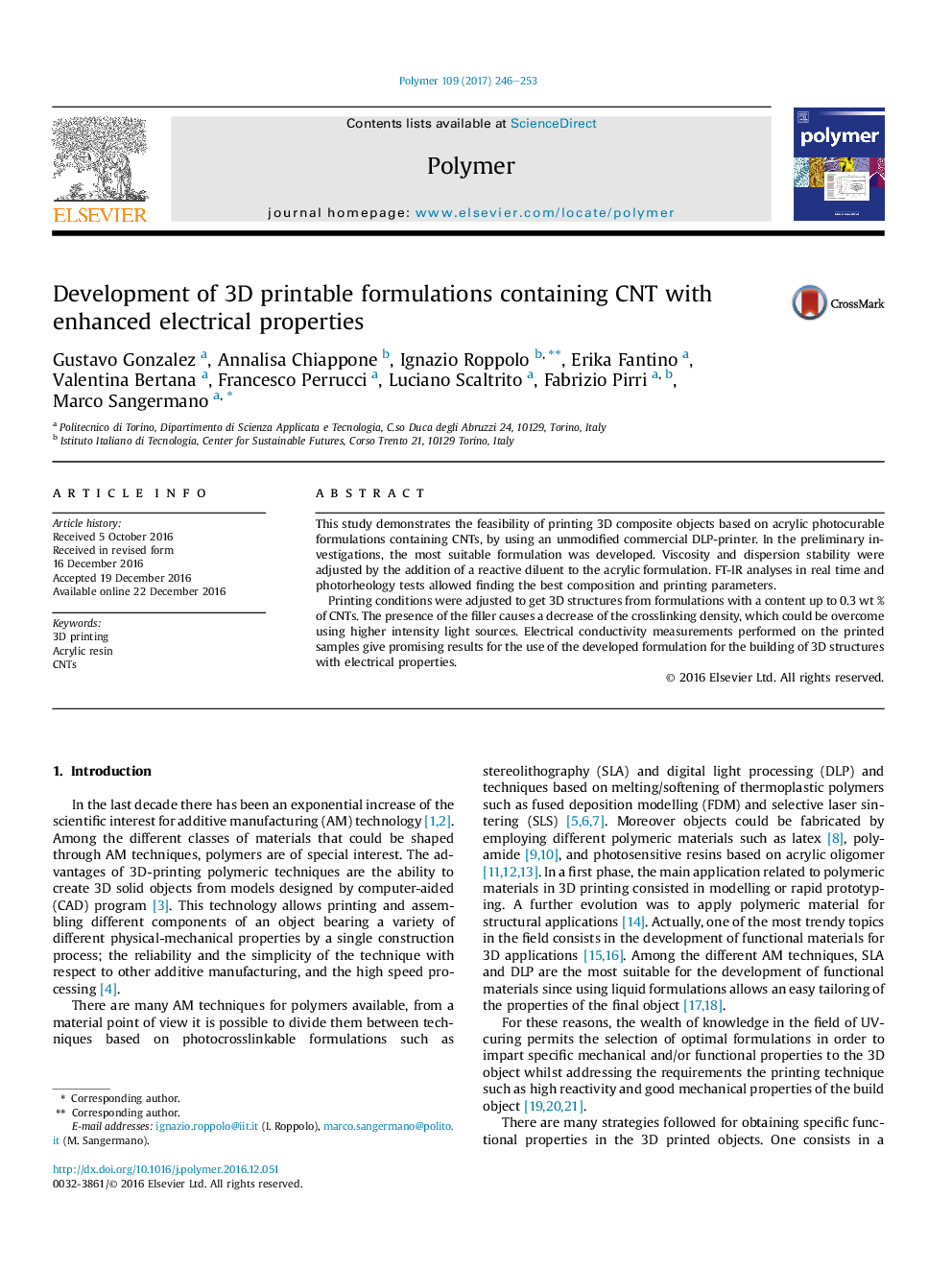| Article ID | Journal | Published Year | Pages | File Type |
|---|---|---|---|---|
| 5178556 | Polymer | 2017 | 8 Pages |
â¢The feasibility of DLP-3D printing acrylic-CNTs nanocomposite objects is demonstrated.â¢A suitable formulation is developed adjusting viscosity and dispersion stability.â¢The best composition and printing parameters were studied by FT-IR and photorheology.â¢3D shaped nanocomposite objects with a content up to 0.3 wt % of CNTs were printed.â¢Electrical conductivity measurements on the printed samples give promising results.
This study demonstrates the feasibility of printing 3D composite objects based on acrylic photocurable formulations containing CNTs, by using an unmodified commercial DLP-printer. In the preliminary investigations, the most suitable formulation was developed. Viscosity and dispersion stability were adjusted by the addition of a reactive diluent to the acrylic formulation. FT-IR analyses in real time and photorheology tests allowed finding the best composition and printing parameters.Printing conditions were adjusted to get 3D structures from formulations with a content up to 0.3Â wt % of CNTs. The presence of the filler causes a decrease of the crosslinking density, which could be overcome using higher intensity light sources. Electrical conductivity measurements performed on the printed samples give promising results for the use of the developed formulation for the building of 3D structures with electrical properties.
Graphical abstractDownload high-res image (226KB)Download full-size image
